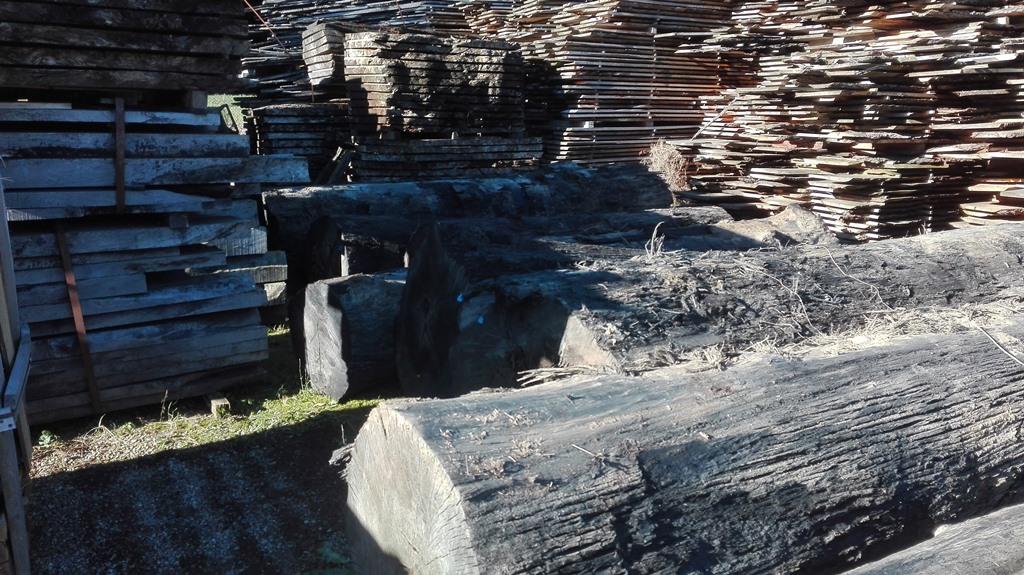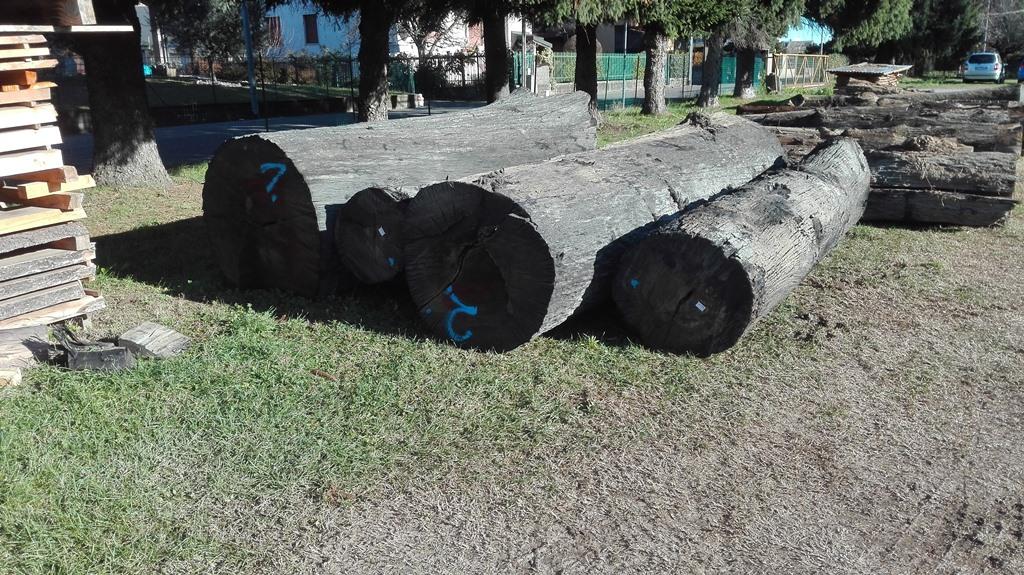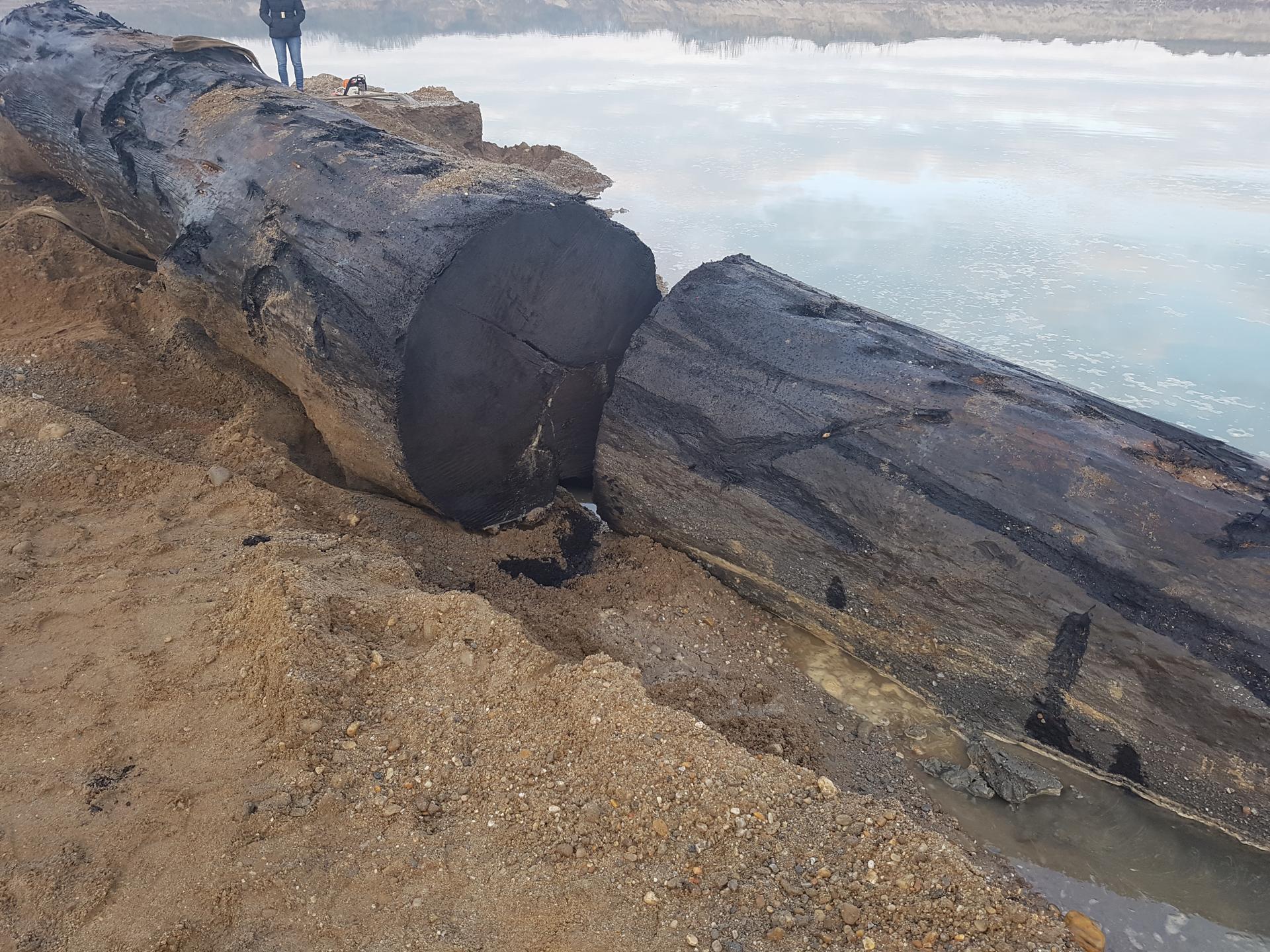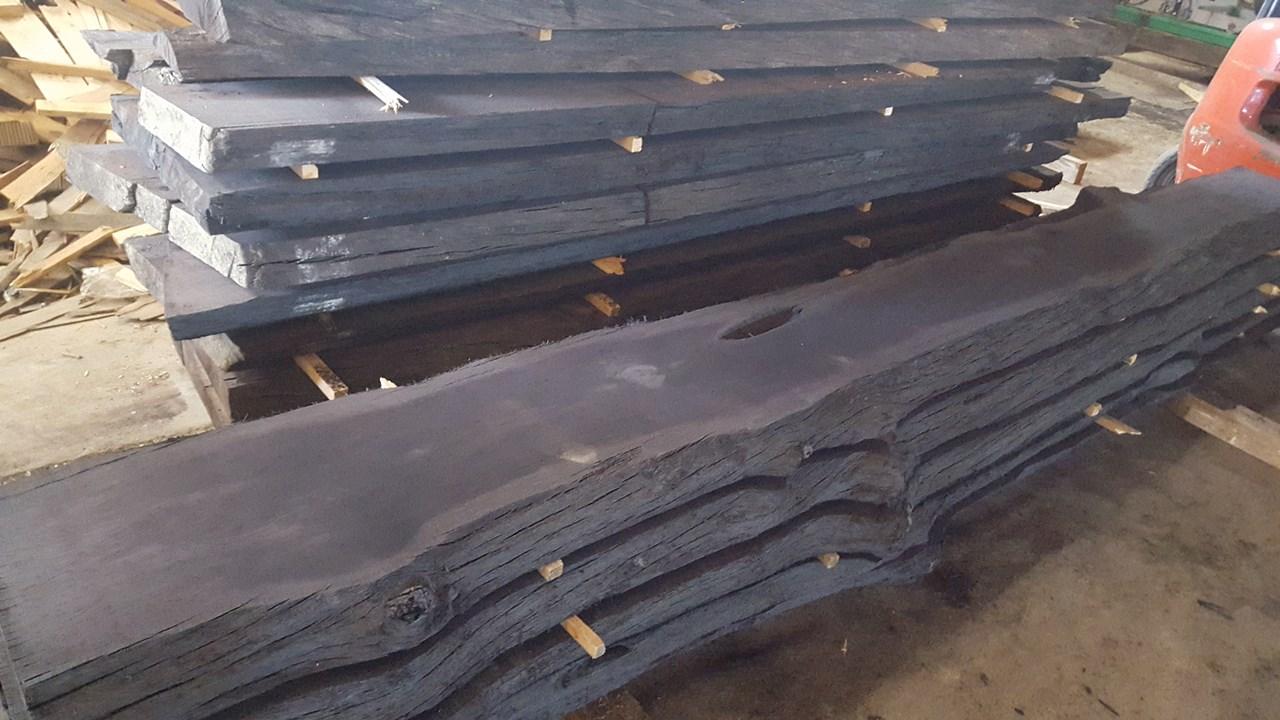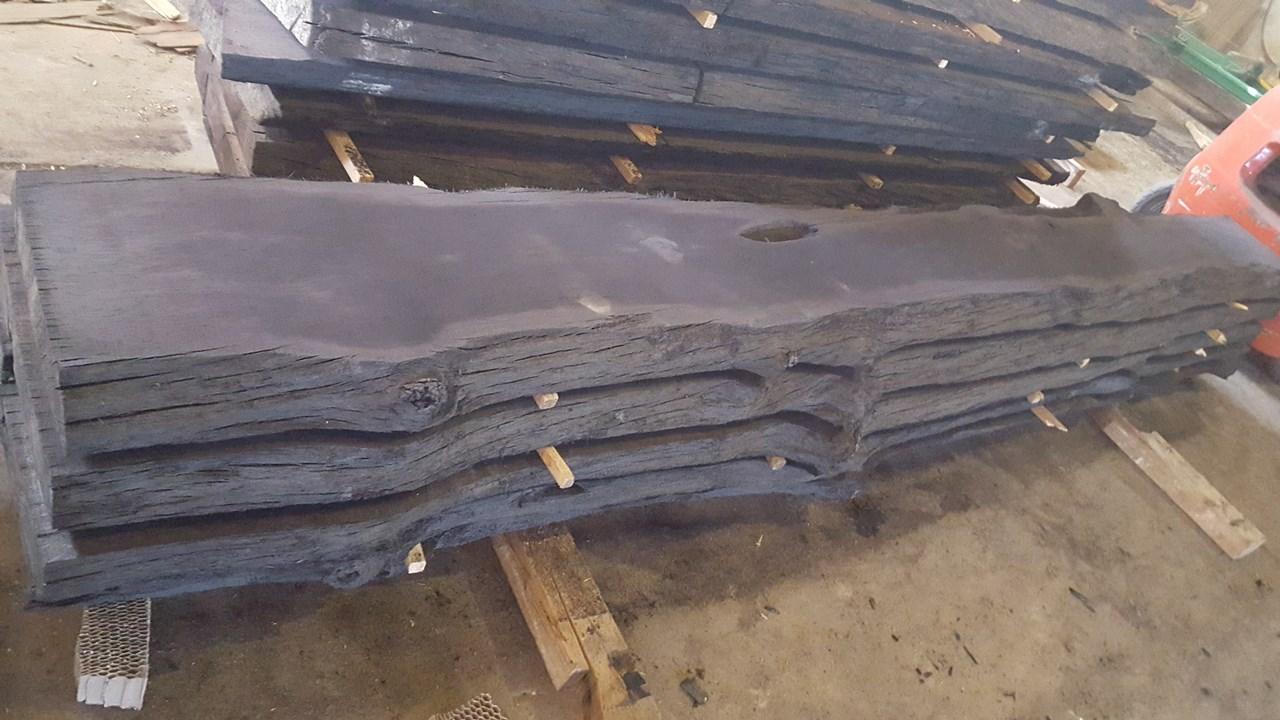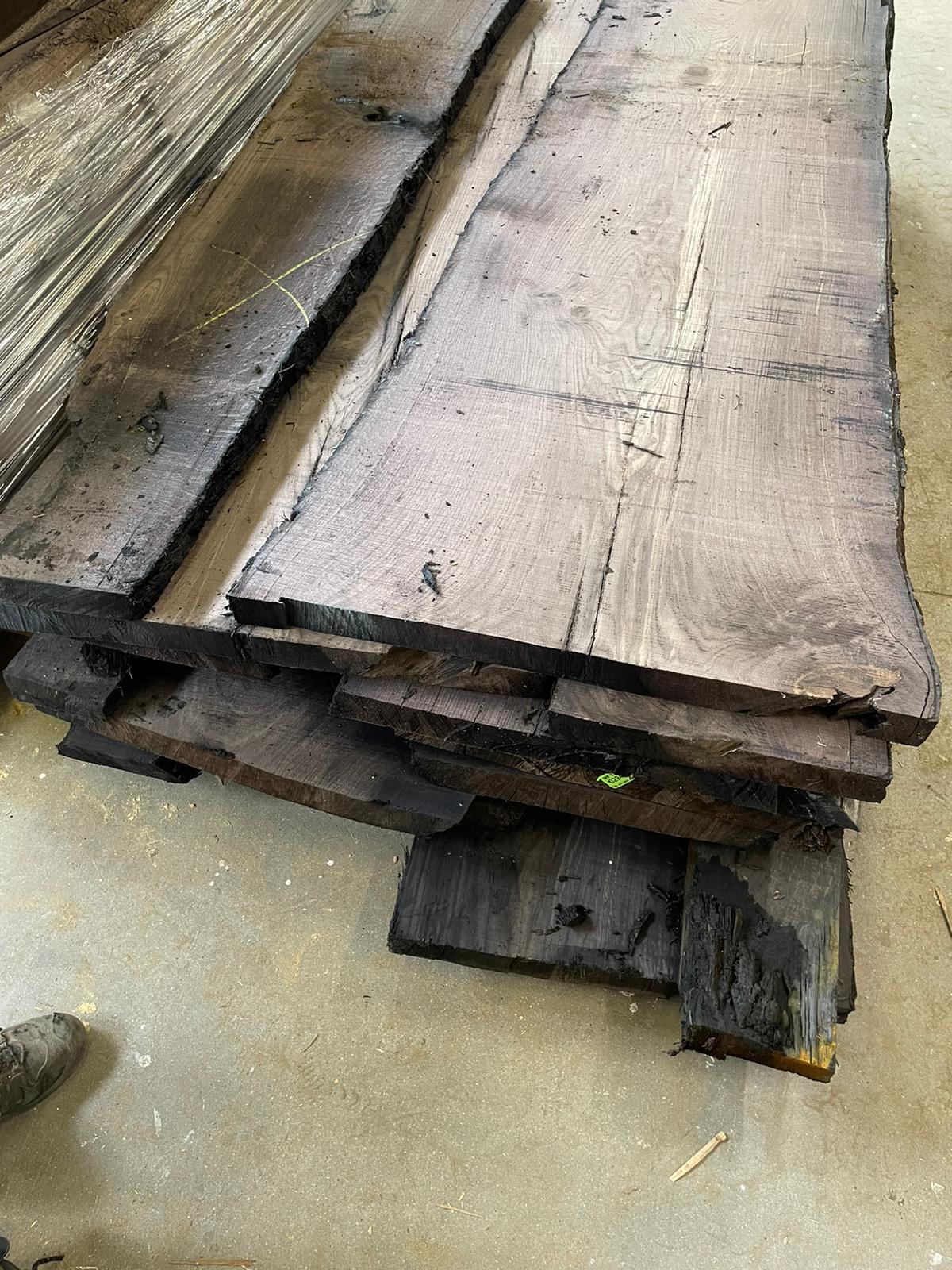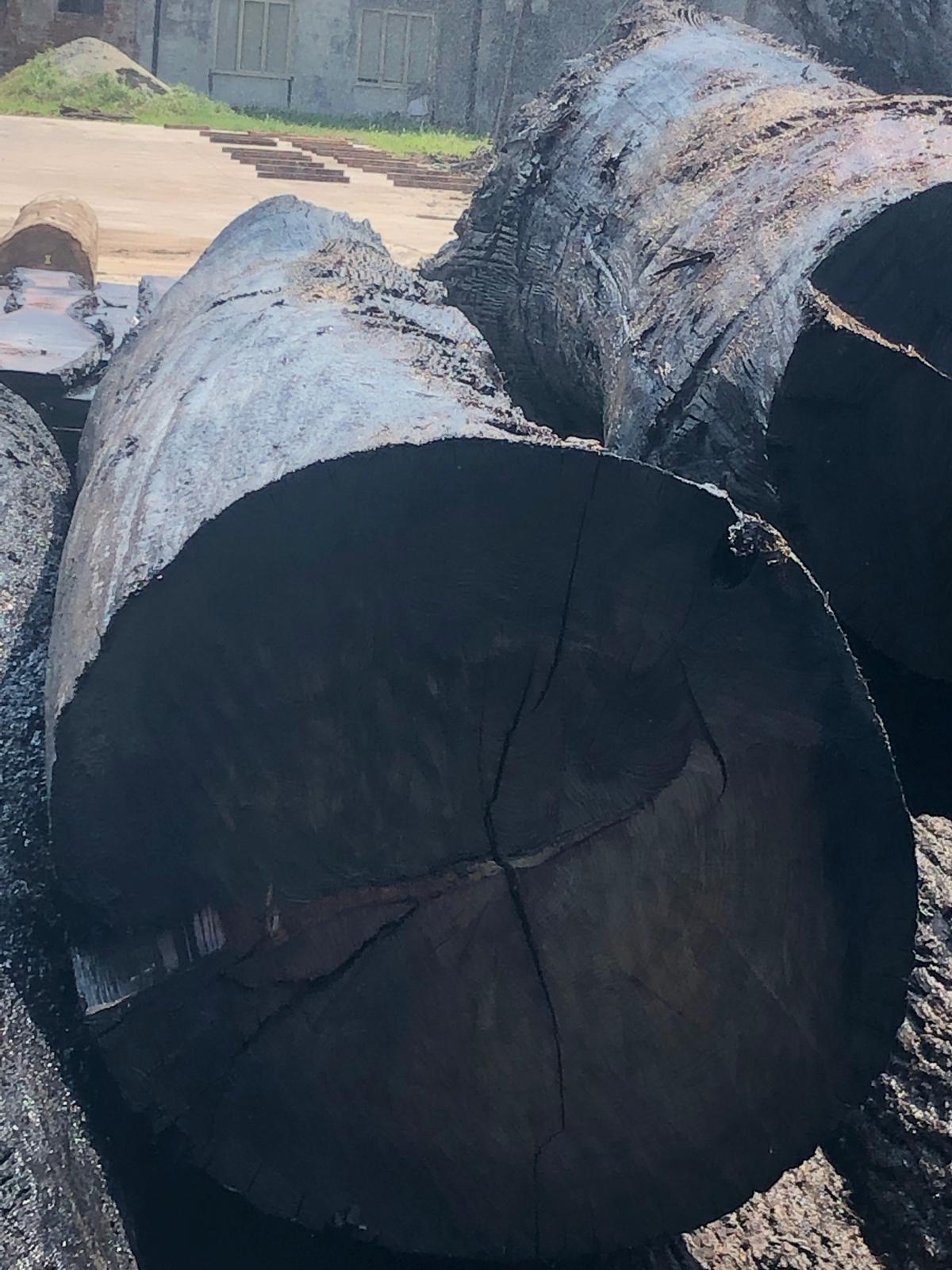
The most suitable habitats for the growth of oak forests are mostly wet, gravelly and clay soils.
In its course, the river often changes its direction by undermining the embankments of these forests, so much so that trees fall nearby and are dragged away into the water. When the trunk is trapped by its branches and roots in the riverbed, it is covered with layers of sediment and sand. Thus covered, and deprived of oxygen, the wood begins a slow process of fossilization that can last thousands of years, thanks to the triggering of chemical reactions that through the formation of mineral salts transform the structure of the wood, making it very similar to stone.
The color becomes more pronounced, darker, and the shades range from black, to brown, to green, to purple.
It is therefore no longer normal wood, nor even fossil stone, but it becomes a hard and robust material that can still be processed by expert hands.
The wood of fossil Oak, formerly known as fossil of swamp or Bog Oak has been the protagonist in many masterpieces of man such as the construction of Venetian palaces, the throne of Peter the Great, or the bedroom of the Sun King, Louis XIV.
This wood is physically extracted from the bed of rivers or lakes, in continuous contact with water and earth. So it’s a rare, natural, inimitable product. Its extraction is not a simple process, it requires precise measures and specific machinery, which make it even more unique and rare.
The resulting processing, after extraction, is equally complex, being this essence rich in moisture and therefore very susceptible to the thermal shock of drying processes.
The finding of the fossil wood takes place respecting the environment and in most cases, the wood is found following previous excavations for construction, without further research in the territory. When they occur, traditional techniques are used that do not involve environmental impact. The extraction takes place manually, using divers that tie ropes around the trunk and bring it back to the surface, thus avoiding damage to both the wood material and the surrounding environment.

